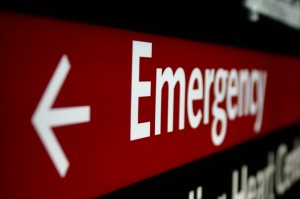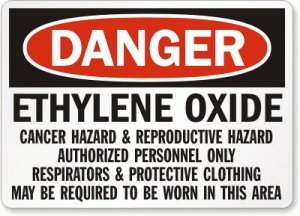 You might be focused on fall protection and scaffold safety. Keeping that welder on the scaffold tethered and safe is a great start, but what about preventing those sparks from igniting those oily rags carelessly left in the combustible trash? Employers have to know about protecting their employees from fire hazards, and OSHA likewise expects that the protection includes fire safety training.
You might be focused on fall protection and scaffold safety. Keeping that welder on the scaffold tethered and safe is a great start, but what about preventing those sparks from igniting those oily rags carelessly left in the combustible trash? Employers have to know about protecting their employees from fire hazards, and OSHA likewise expects that the protection includes fire safety training.
Take the following short multiple-choice quiz on fire safety. The answer key follows, so don’t peek!
1. If you require your employees to use firefighting equipment on the work site
a. the equipment must be adequate for the job.
b. you must train your workers to use the equipment safely.
c. you should leave firefighting to the fire department.
d. Choices a and b above.
2. Must employers provide portable fire extinguishers on the job?
a. Yes, always.
b. No, but if they do, the employers have to be trained in the principles of fire extinguisher use.
c. Yes, but only OSHA approved models.
d. No, never.
3. OSHA’s most stringent fire prevention standards cover which specific chemicals or agents?
a. Ethylene Oxide
b. Methylenedianiline
c. Butadiene
d. All of the above.
 4. Some types of employers–hazardous material handlers, certain chemical manufacturers, etc.–are required to develop emergency action plans in case of fire. Which of the following must be included in those plans?
4. Some types of employers–hazardous material handlers, certain chemical manufacturers, etc.–are required to develop emergency action plans in case of fire. Which of the following must be included in those plans?
a. an employer review of the plan with new employees and with all employees whenever the plan is changed.
b. an alarm system that includes voice communication or sound signals such as bells, whistles, or horns.
c. the routes for workers to use and procedures to follow as well as accounting for all evacuated employees.
d. All of the above.
5. If a fixed fire extinguishing system is temporarily out of service, to meet OSHA standards, what must be in place?
a. Nothing. Employees should only be warned to be more observant.
b. A special fire watch in place, but only at night.
c. A fire watch of trained employees to respond to fire emergencies must be substituted temporarily until the system is back in service.
d. A fire watch consisting of hired security personnel will suffice.
Answer key:
1-d. Covered by Title 29 CFR. Only trained employees should be allowed or required to use fire fighting equipment.
2-b. See 29 CFR Part 1910, Subpart L for details.
 3-d. Ethylene Oxide is a common ingredient in disinfectant and is flammable at room temperature. Methylenedianiline (MDA) is a highly toxic corrosion preventative agent that is combustible and requires very careful handling. Butadiene is a flammable chemical used in the production of rubber among other industrial uses.
3-d. Ethylene Oxide is a common ingredient in disinfectant and is flammable at room temperature. Methylenedianiline (MDA) is a highly toxic corrosion preventative agent that is combustible and requires very careful handling. Butadiene is a flammable chemical used in the production of rubber among other industrial uses.
4-d. Not only all of the above but also lots more: plans must include emergency training, ensure the employees know what the signals sound like and have provisions for disabled employees.
5-c. Fire extinguishing systems in place throughout a workplace are the best firefighting tools for detection, sounding the alarm and dumping water to the fire. When the system is down for any reason, OSHA requires a trained fire watch in place.
If your work requires you to be around hazardous areas where the potential for fires is elevated by conditions on the job site, these questions should be easy for you. If they weren’t so straight forward, or you haven’t had fire safety training in a while, it would be a good idea to take a refresher course to brush up on that knowledge.



